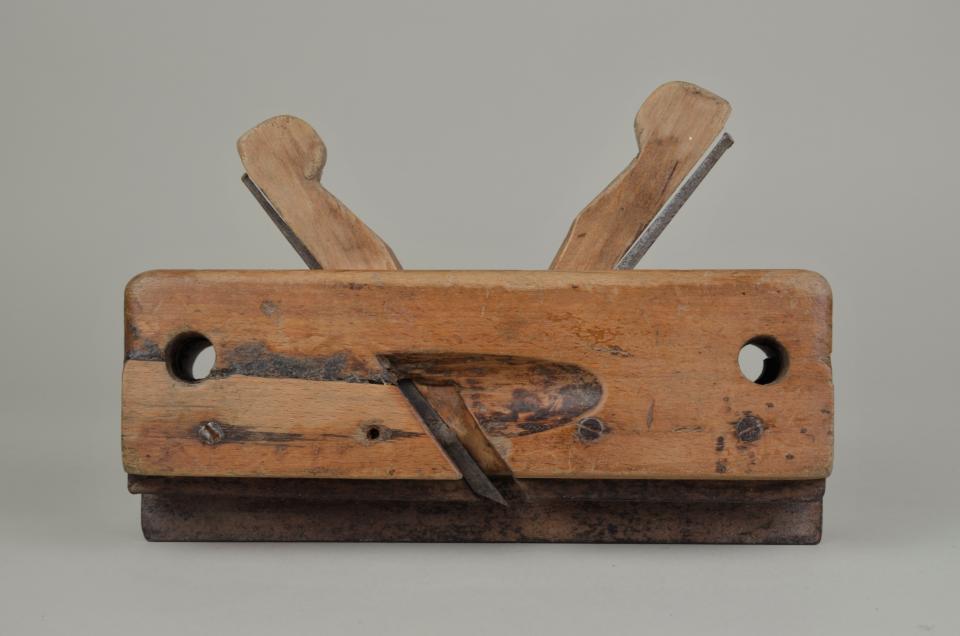
L: 27.8cm W: 7.3cm H: 18.5cm
a- L: 27.8cm W: 7.3cm H: 10.6cm
b- L: 17.0cm W: 2.7cm H: 1.0cm
c- L: 17.1cm W: 1.2cm H: 0.7cm
d- L: 18.1cm W: 3.2cm H: 1.3cm
e- L:18.2cm W: 3.5cm H: 0.7cm
A twin tongue-and-groove plane consisting of 5 parts.
a- The body is shaped as a rectangular prism. The width is consistent throughout. The "groove" side has 4 screws lining the bottom edge. The throat is exposed over the lower half of the body. There is a parabola-shaped depression in front of the throat. The sole is flat and is split in the centre by a metal fence. The "tongue" side shows the exposed ends of the screws. The throat is exposed over the bottom 2/3 of the body. There is a parabola-shaped depression in front of the throat, wider and stouter than the groove side. The sole is flat with a flat-bottomed groove running along the length. A wide metal fence separates the two halves. There are two holes running through the width of the body near the heel and toe ends.
b- The grooving wedge is made of a hardwood similar to the body. It tapers to a (broken) point on one end and is rounded on the other. A shallow cut-out below the head allows for easy handling.
c- The grooving iron is a narrow strip of dark grey metal. The thickness increases near the bottom, then abruptly tapers to a chisel edge. A small bump on the viewer's left side sits near the cutting edge and helps to keep the iron in place. The width of the cut is 3/8".
d- The tonguing wedge is made of a hardwood similar to the body. It tapers to a (broken) point on one end and is rounded on the other. A cut-out below the head allows for easy handling. It is slightly longer and wider than the grooving wedge (b).
e- The tonguing iron is a narrow strip of dark grey metal. It abruptly widens near the cutting edge. The cutting edge consists of two prongs that each taper to a chisel edge. The width of the cuts are (left-right) 5/8" and 3/8", with a 3/8" gap. A stamp on the handle of the iron reads "P.W.??AND".
Match planes are double-sided, with two sets of irons and wedges. One side cuts straight grooves, while the other cuts “tongues”, or 2 parallel grooves with a ridge in the middle. These blades are of corresponding sizes, so the finished workpieces can fit into one another neatly. While tonguing and grooving planes can be bought individually, match planes have the advantage of doing complete joining work with a single tool.
